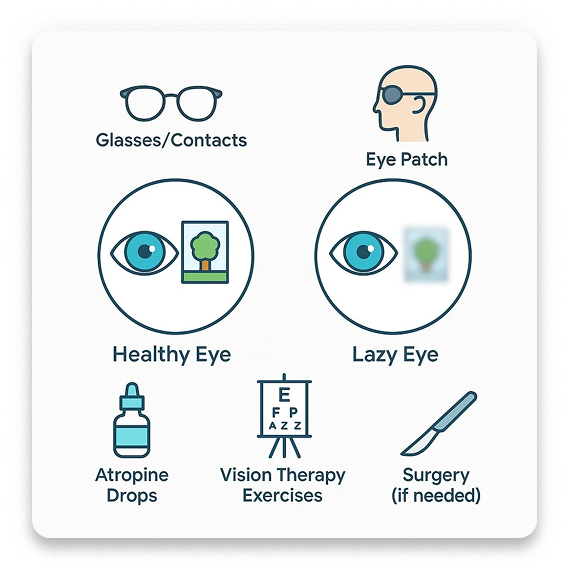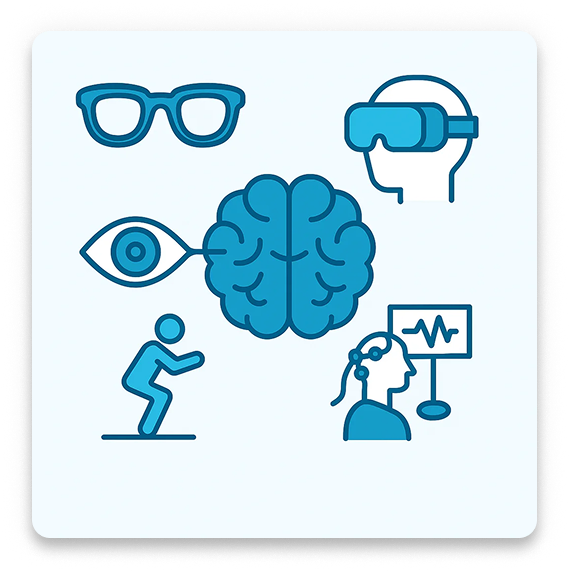Vision Evaluation
What is Amblyopia?
Amblyopia, also called “lazy eye,” is a vision problem that develops in babies and young children. People with amblyopia usually have poor vision in one eye, which can be fixed with glasses or contacts. Our advanced treatment goes beyond traditional patching methods.
When a child is young and has trouble focusing both eyes (binocular vision), the brain turns off or blocks the signals from the eye that is having trouble. However, this condition can be easily identified by a comprehensive eye health and vision evaluation.
When a child is young and has trouble focusing both eyes (binocular vision), the brain turns off or blocks the signals from the eye that is having trouble. However, this condition can be easily identified by a comprehensive eye health and vision evaluation.
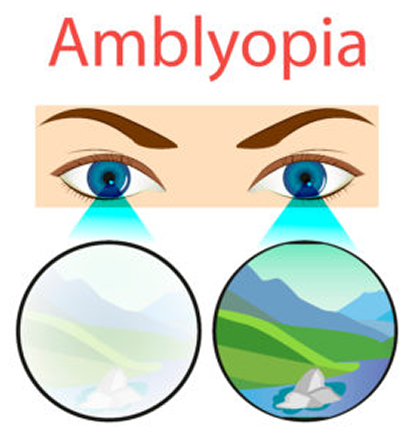

key points
Common Causes & Types
Understanding the factors that contribute to amblyopia
Strabismic Amblyopia(SQUINT)
- Occurs when the eyes are misaligned (strabismus). To avoid double vision, the brain shuts off or suppresses the weaker eye.
Refractive Amblyopia
- Occurs when one eye has significantly uncorrected nearsightedness, farsightedness, and/or astigmatism. The brain favors the eye with better vision.
Deprivation Amblyopia
- Occurs when light is blocked from entering an eye, such as cataracts or astigmatism. The brain favors the eye without obstruction.
treatments
Treatment - Beyond Patching
Until recent advancements, treating amblyopia with an eye patch was the general model of care. However, patching is very uncomfortable for the patient, has multiple negative side effects, has limited results based on age and usually not recommended past age 10, and does not usually develop the patient’s ability to obtain normal binocular vision with depth perception. Now there are better evidence-based methods for treating amblyopia that goes beyond patching.
Digital Therapy Programs
- Interactive computer-based exercises designed to stimulate the amblyopic eye and improve binocular vision.
Binocular Vision Training
- Advanced techniques to help both eyes work together effectively, moving beyond traditional patching.
Vision Therapy Games
- Engaging therapeutic games that make treatment enjoyable while targeting specific visual deficits.
Special treatment
Treatment by Age Group
Key developmental stages in your child's visual system
Children (3 -8 Years)
- Methods
- Interactive games, modified patching, and binocular training
- Treatment Approach
- Critical period for treatment with highest success rates
Older Children (9-17 years)
- Methods
- Digital therapy, vision training exercises, and binocular stimulation
- Treatment Approach
- Extended treatment period but still highly effective
Adults (18 + Years)
- Methods
- Advanced binocular therapy, perceptual learning, and dichoptic training
- Treatment Approach
- Neuroplasticity-based treatment showing promising results
excellent Stats
Treatment Success Rates
Our comprehensive approach to strabismus treatment has achieved excellent outcomes across all age groups
98%
Overall Success Rate
6-12
Months Treatment
4000+
Successful Surgeries
4%
Population Affected
choose us
Why Choose Us?
Don’t wait— Early action leads to better outcomes! Book Your Consultation with Dr. Ankit Shah – Eye Specialist
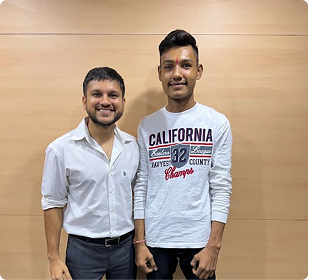
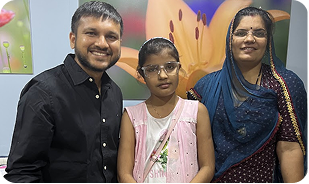
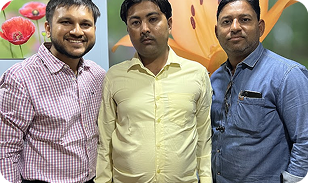
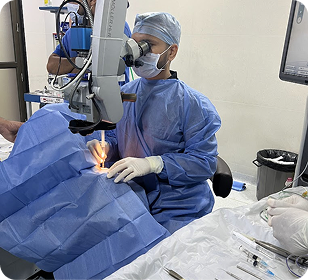

Experience
11+ Years Pediatric Vision
Expertise

Practice
Over 4000+ Patients Treated

Environment
Friendly & Child-Centered Environment

High Success Rate
Proven Success with Early Intervention

